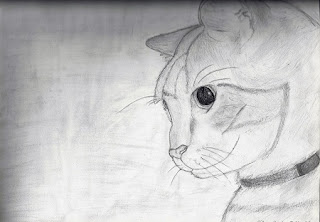
It was over 200 years later that an English scientist found out that the substance was not lead, but a type of carbon. Today, many people still use the misleading term. Probably if it was lead, no one would be using pencils for fear of poisoning.
This new substance was named graphite, after the Greek word grapho - γράφω, which means “to write”. Because the graphite was so useful for marking things, people began using the graphite in art and writing. They found that since the graphite would mark their hands, people started to wrap the graphite in string or sheepskin. These tools were called pencils, which comes from the Latin word “pencillus”, meaning “little tail.”
As with charcoal pencils, there are different types and styles, but they have a wider range. The grades are 9B, 8B, 7B, 6B, 5B, 4B, 3B, 2B, B, HB, F, H, 2H, 3H, 4H, 5H, 6H, 7H, 8H, and 9H. Pencils made with more clay produce a harder pencil, while less clay produces a softer one. The harder the pencil is, the lighter, the softer, the darker. B means soft, and H means hard.
Have you ever wondered about the history of the pencil as we know it as you are sketching? The first pencils came into use in 1560. These pencils were low grade, and fell apart easily. People used to hollow out the casing that they wanted to put the core into, and then slipped in a thin core. This method had to be improved, as it was a slow and inefficient process.
One of the failed attempts at making a good pencil was done by the Faber‘s. The German family used powdered graphite to make a substandard crude pencil.
It was not until 1795 that Nicholas Jacques Conte (N.J. Conte), a French army officer, made the first truly successful pencil. It is very similar to the way pencils are made today. The core was made of powdered graphite, mixed with clay, after which it was molded into a thin stick. The last step of making the core is to bake the “dough” in a kiln.
Now that it was improved, the casing had two parts, making it easy to glue together after you inserted the core. All pencil manufacturers now use his recipe today.
After the working pencil was made, the Faber family copied N.J. Conte’s method and became successful themselves.
In the modern day, most of us use pencils in our art. We may be sketching out an outline for a painting, or doing a pencil drawing. Next time you hold a pencil, just think about how they were made, and have fun!






